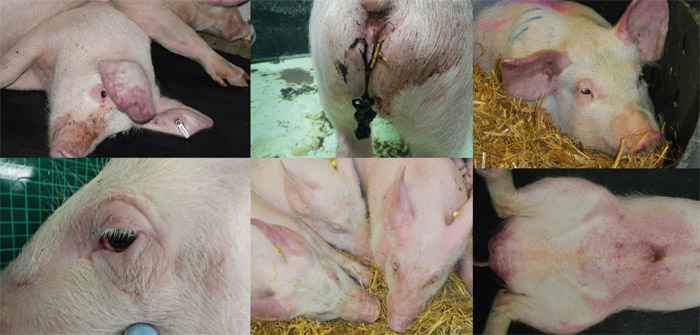NPA chief executive Zoe Davies has urged all pig keepers to step up their biosecurity to help protect the UK pig herd from the African swine fever (ASF) virus.
Zoe updated the South Central NPA Spring Regional meeting at Newbury, on Tuesday night, about the current ASF situation.
There have now been more than 100 cases officially confirmed in China, while the virus has now spread to Vietnam and Cambodia.
It has emerged over the past few weeks that the outbreak appears to have been vastly under-reported, prompting forecasts of major shortfalls in Chinese productivity and increased import demand. But while UK producers stand to benefit from the knock-on effect of the Chinese outbreak, Zoe outlined her fears about the threat the virus poses to the pig industry.
Border controls
“The biggest concern for me at this moment is infected product getting into the country,” she said.
Zoe pointed out that contaminated meat has already been found at ports and airports in several countries, including Australia, the US, Japan, Taiwan and South Korea. But while the likes of the US, where one million tonnes of smuggled Chinese imports were seized in March, Canada and Australia have been ‘massively ramping up’ their border controls, there is little sign of similar activity in the UK.
“There might be a few posters and a few products seized, but there is just not the same level of concern. We have been putting a lot of pressure on Defra to press UK Border force to raise its level of interest in these kinds of products, particularly from China, and increase its resource.”
Biosecurity
Modelling by SRUC, Scotland’s Rural College, has highlighted how difficult it would be to detect the virus on farms, given that, while infectious, it is a ‘slow burner’. Based on data from outbreaks in Georgia, it usually takes about 13-17 days for pigs to die and they are infectious for half that time.
African swine fever symptomsWhen disease is in the country, even with surveillance in place, Russian cases has shown it can take 32 days on average to detect cases, with the first index case taking longer at around 40 days.
SRUC modelling, using real eAML2 pig movement data and accounting for local spread, showed how the virus could spread across the country in weeks if it got into the key pig producing areas. “The real concern is that it could be everywhere before we even knew it had arrived,” Zoe said.
“One of the biggest issues they discovered was lorries,” she said. “We have woefully poor lorry washing facilities in the UK compared with a lot of other countries.”
In particular Zoe highlighted the use of private haulage companies, which account for 40% of pig moves.
“Good biosecurity is critical. Lorries must be cleaned to the standard that would prevent disease being transported around the country.
“There is no point becoming good at biosecurity once the disease has hit the country – it is too late. People need to be thinking now about the biosecurity they are employing on the farm and what they expect from hauliers.”
Educating the public
Zoe also highlighted the risk posed by the public discarding infected meat in places accessible to pigs. “Classical swine fever in 2000 was caused by an Asian strain, which got into an outdoor pig unit in East Anglia. This could happen today if someone walking past your pigs is unaware of the risks,” she said.
She urged producers that have not done so already to get hold of free signs produced by AHDB warning the public not to feed the pigs. Email: comms@ahdb.org.uk to request them.
Feral pigs
Zoe explained how the NPA had asked AHDB to set up a feral boar action group which was working with the local council and forestry officials to raise awareness of risks associated with feeding the Forest of Dean’s growing feral pig population.
The group is also developing a coherent strategy for controlling feral pig numbers in the UK and reducing the threat they pose in terms of disease spread.
See more on Zoe’s presentation here




